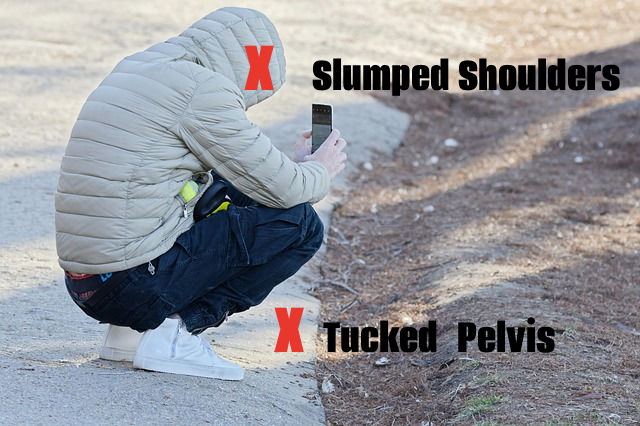
Can Your Pelvic Floor Be Too Strong?
Something you'll never hear - "Your biceps are too strong."
This confused me for a long time about the pelvic floor --
On one hand, you hear that you should strengthen it.
Then, on the other hand, you that pelvic floor problems are because it's too strong.
Your pelvic floor is a group of muscles including the perineum (the space between the anus and genitals) that stabilize the lower part of your core. It also helps you hold in your urine and bowels.
Pelvic floor imbalance can lead to incontinence, organ prolapse, and pain. The pain can be with sexual intercourse, spasms in the muscles themselves, or even lower back or hip pain.
I've experienced this firsthand. Before having children, my midwife said that my pelvic floor was too tight. That's why the baby wouldn't come out! 13 hours of labor and an episiotomy later, a strong sneeze or a a trip to the trampoline park led to urine leakage. Ugh.
What most people call a "too stong pelvic floor" is actually a tense pelvic floor.
And tension doesn't equal strength.
In fact, tension makes you vulnerable to weakness.
Tight ⍯ Strong
You don't think about your pelvic floor until it starts mal-functioning. When it's going according to plan, it holds everything up and in place.
It's like when the tops of your shoulders (upper trapezius) get tight when they're out of alignment due to the lower traps or lats not engaging.
Unfortunately, I hear from clients with pelvic floor issues that they're concerned about doing anything that may "strengthen" their pelvic floor. Because they've been told it's already too tight.
What's actually going on -->
If your pelvis is tilted posteriorly (a tucked tailbone), it increases pressure on the pelvic floor. Literally every step you take with this posture causes more tension.

Some exercise instructors and PT's tell people to "tuck their tailbone" or "point your tailbone to the floor."
That's exactly what exacerbates this condition.

Instead, when I hear a yoga instructor say "tuck your tailbone," what I do instead is keep my regular hip anteversion, and pull up on my pelvic floor.
How to Activate the Pelvic Floor for Strength
Keep in mind that we're not creating more tension, but instead, real strength.
You should start with a slightly anteverted pelvis. Like if your hips are a bowl, and you're spilling the water out of the front of that bowl.
From that postion, pull up through the bottom part of your core. This is your perineum, the space between your anus and genitals. Pull up like it's a vacuum! To me, it feels like a "zipping up" energy. Go a few muscle squeezes here to get the idea of what it feels like.

You can also think of it like this: imagine the front of your pelvis has 2 sides, and you're pulling the 2 sides together.
Too much anteversion in the hips without core engagement leads to "sway back." It's like a slumping "C-shaped" back, but in the opposite direction.

Engaging through the perineum/pelvic floor muscles makes sure your hips don't go too far anterior. It helps keep your back straight, which is what you want for overall good posture.
That's where the strength comes from! It's a balancing act.
Exercises That Can Help
First, we need to encourage a healthy anteversion in the hips.
The exercises I like for that are hip rolls, Qi Gong joint rotations, and cat/cow.
These exercises should be done super-slow. For example, one part of the cat/cow may take me a full minute. I move one vertebra at a time, keeping my pelvis and knees at the same angle (90-degrees) the whole time.

Once your hip mobility improves, we can work on strengthening (not tensing!) your pelvic floor.
For this I like to do simple one-leg lifts, single foot slide-outs, or hip lifts with your feet up on a wall.

One-leg lifts. Done slow. No fast, jerky lifts. Using core strength and breath to move the foot. Only go as high as you can with LEVEL hips.
Don't miss a beat!
New moves, motivation, and classes delivered to your inbox.
We hate SPAM. We will never sell your information, for any reason.
